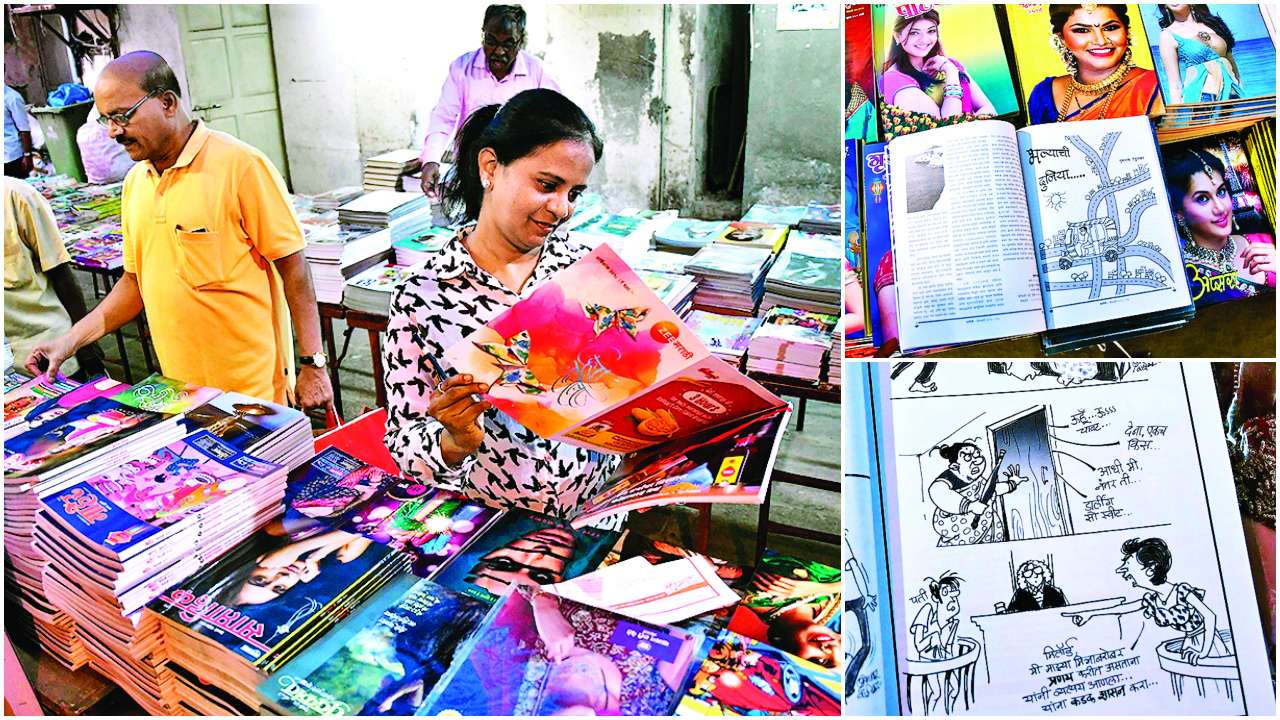
About 400 Diwali ank or Special Diwali issues have been published this year, with a turnover of Rs 25 crores. Anks, brought out by various regional publishers in Pune and Mumbai, is a 110-year-old print tradition that has kept the Marathi language and culture alive. In fact, Marathi-speaking families, while drawing a budget for Diwali shopping, keep aside Rs 1,000 only to buy a few quality Diwali anks. These issues are picked up for their short stories, seminars on current issues in prose and poems, jokes and humor, special interviews, sports news and Bollywood-related articles.
It began with legendary Marathi writers using these Diwali issues to address their dissent against the British rule. Moreover, Ashok Kothavale of Majestic Prakashan publishers, says that whether it is Sahitya Samrat, NC Kelkar or Veer Savarkar, most Marathi writers in the past 75 years have used Diwali issues as their launchpad. Kothavale, who brings out two Diwali anks – Deepavali and Lalit – devoted to literature, says it was legendary writer Jayawant Dalvi first wrote for Diwali anks, before becoming a famous Marathi novelist. Even famous Marathi plays like Barrister (with lead actor Vikram Gokhale) were first published in novel form in Diwali anks, says Kothavale. "If one wants to trace the journey of Marathi literature, culture and social development in the last 110 years, Diwali anks is the best study material."
Ramesh Radthivadekar, founder of Pune's Akshardhara Book Gallery, says anks cater to different subjects. For instance, Grahankit, Grahsanket, Jyotish and Bhagyalikhit are devoted to astrology. Shatayushi, Hridaybhaan, Deerghaayu and Vanaushadhi report on health. Ruturang, Antarnaad, Mauj, Padmagandha and Akshar are devoted to literature. Manini, Milun Saryajani, Sasar-Maher and Lalana are devoted to women-related concerns. While Aawaj, Jatra, Firaki and Mohini are suitable for a light read.
Diwali anks inculcate good societal values and enlighten minds, feels Suhas Bahulkar, chairperson of Mumbai's National Gallery of Modern Art (NGMA). Talking about the covers of these anks, he elucidates how its publishers are not glamour-hungry. "The covers were painted by acclaimed artists, and were pictorial representations of the then changing contemporary life around the festival of Diwali. This allowed youngsters to develop an eye for good art and their documentation is now invaluable for even researchers who wish to study Marathi culture and tradition of this century."
Arun Shevate, who has been helming the publication of an ank named Ruturang for the past 26 years, says that the quality of these Diwali issues is increasing every year, and ridicules the argument that these Diwali issues are a money-making scheme. "The monetary returns are nowhere close to the effort taken in bringing out these anks." Overall, with print media in taking a beating at the onset of digital age, in the last decade, the number of advertisers and others who were proud to monetarily associate with Diwali anks, have drastically curtailed. Shevate attributes this to the lack of serious attitude towards anks. "This unique literary and cultural tradition of the Marathi linguistic world is now being forgotten," he laments.
Even Radthivadekar, observes that this year, real estate developers and other entrepreneurs, usually on the forefront of financing these anks through advertisements, have not been so enthusiastic. "This has increased the price. On an average, the prices have gone up by 20 per cent."